Definition
Determiners are words placed before a noun to give information such as quantity, ownership, and specificity.
Determiners are one of the nine parts of speech given below.
Types of Determiners
- Determiners of Quantity
- Determiners of Ownership
- Determiners of Specificity
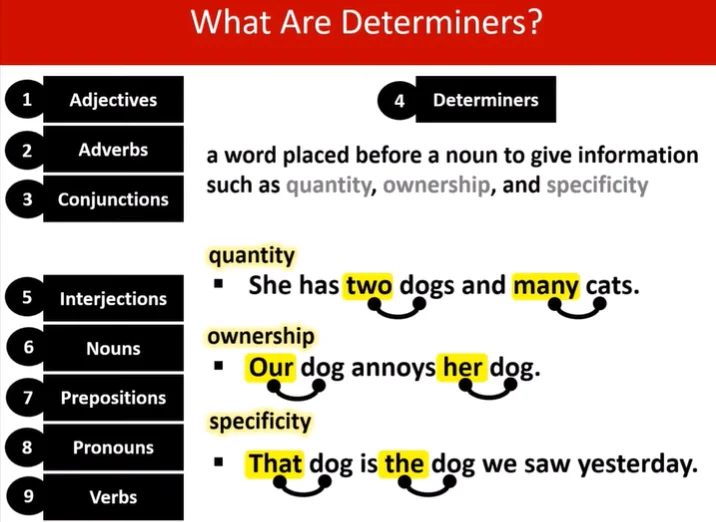
Quantity
She has two dogs. So, the number, ‘two’ sits before the noun dogs and gives us information about quantity.
Many cats are here. So, the determiner ‘many’ sits before the noun cats and also gives us information about quantity.
Ownership
Our dog annoys her dog. So, here, the determiner ‘her’ tells us about ownership.
I broke your chair yesterday. Here, the determiner ‘your’ also tells us about ownership.
Specificity
That dog is the dog we saw yesterday. (I’m specifying which dog), (that also specifies the dog).
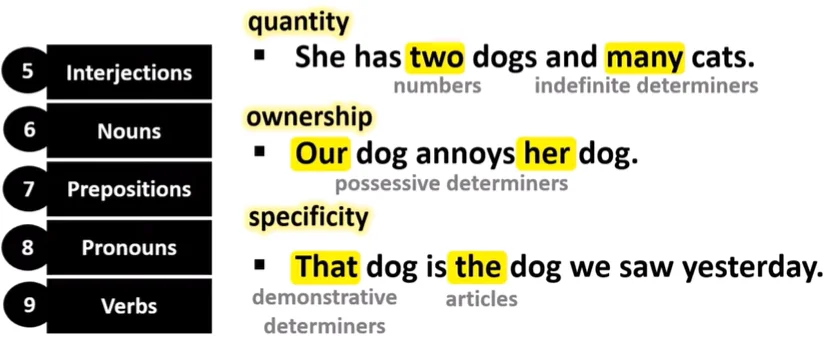
Determiners of Quantity – Examples
Determiners that specify quantity are quantifiers and they can be numbers like one, four, twenty, etc. Here is an example:
He did not sleep for twenty-four hours. So, here, we have a quantifier sitting before a noun to tell us quantity, quite an easy idea.
There are other types of Quantifiers, enlisted below:
- Many
- Much
- Several
- Some
- No
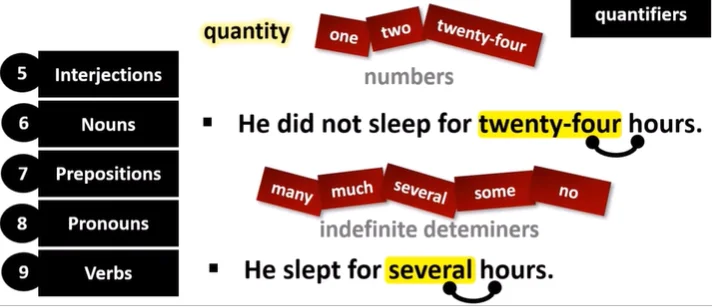
These are called indefinite determiners. Because they tell us about quantity but don’t tell us the exact amount. That’s why they’re called indefinite. Remember, these are also quantifiers.
He slept for several hours. So, the determiner ‘several’ (which is a quantifier) sits before the noun hours to give us information about quantity.
Determiners of Ownership – Examples
The determiners of ownership are words such as:
- My
- Your
- His
- Her
- It’s
- Our
- Their
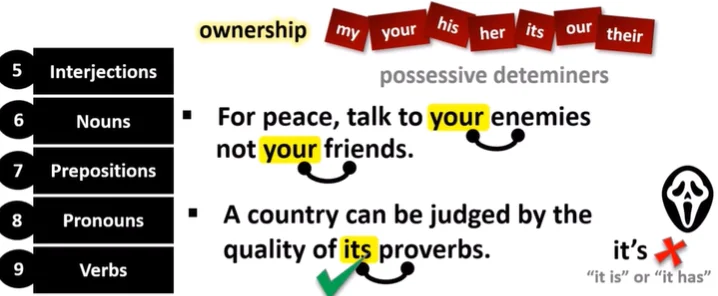
These are called possessive determiners. For example: ‘To peace, talk to your enemies, not to your friends.’ Here, you can see the determiner sitting before their nouns to give ownership information.
A man can be judged by the quality of his thoughts. The quantifier ‘his’ sits before thoughts to tell us about ownership. They were possessive determiners.
It’s worth just pointing out that this is correct. There is no apostrophe in a possessive determiner. That would be wrong if you put an apostrophe in. It’s quite a serious grammar mistake. Remember, it’s with an apostrophe is a contraction. It always stands for ‘it is or ‘it has.’
Determiners of Specificity – Examples
The most common determiners that talk about specificity are a, an, and the. These are called articles.
Whoa! What was that? Well, that was a criminal. A criminal. We don’t know which criminal. Just a criminal It’s non-specific. So, the article ‘a’ and ‘an’ sit before a noun to make it non-specific.
This is the criminal most wanted ever. Only this time, we’ve called him ‘the‘ criminal because we’ve just been speaking about him. We know which criminal. This time, it’s a specific criminal. It’s the criminal we all know about. So, that’s how the articles are used for specificity.
Here are Demonstrative Determiners used for specificity:
- This
- That
- These
- Those
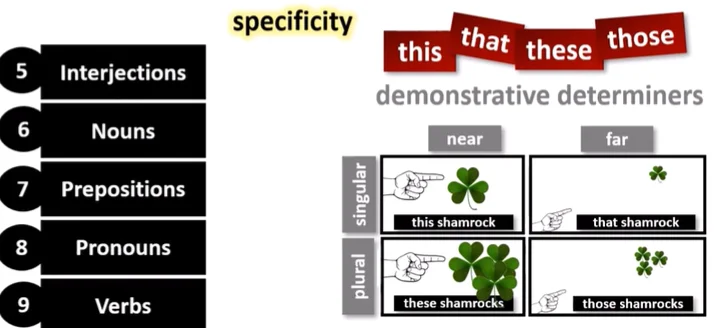
These are called demonstrative determiners and they are usually used to tell us about something in the speaker’s surroundings. So, they tell us whether something is near or whether something is far. Whether something is singular, or something is plural.
- For example, we might say this shamrock. The determiner ‘this’ tells us that it’s near and that it’s singular.
- Or, we might say that shamrock. The determiner ‘that’ tells us that it’s something far away and singular.
- Or, we might say these shamrocks. The determiner ‘these’ tells us that the shamrocks are near and plural.
- Or, we could have those shamrocks. The determiner of ‘those’ tells us that the shamrocks are far and plural.
Now, notice that these demonstrative determiners tell about quantity as well as specificity. So, we’ve used the word ‘and’ in the definition, not ‘or.
Recap of Determiner
A word placed before a noun to give information such as quantity, ownership, and specificity is called determiner.
- The quantifiers. The ones that specify a quantity. So, they can be numbers or indefinite determiners.
- The ones that give us information about ownership. So, they are called possessive determiners.
- And the specificity ones include demonstrative determiners and the articles.
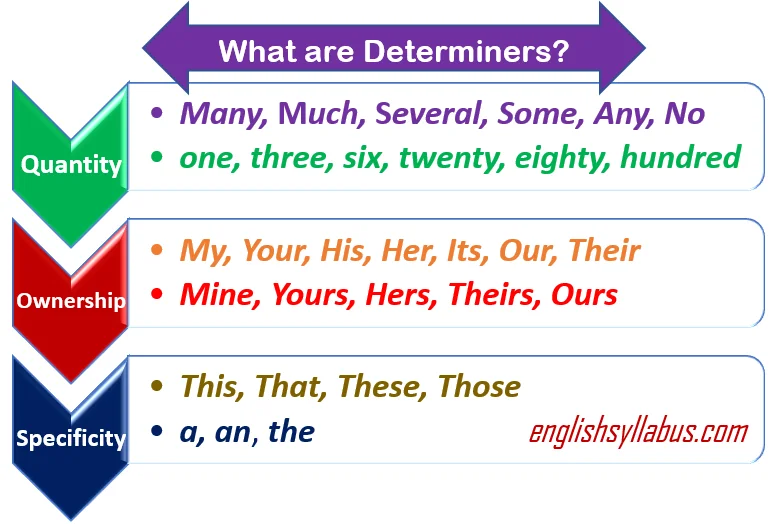

Perfect